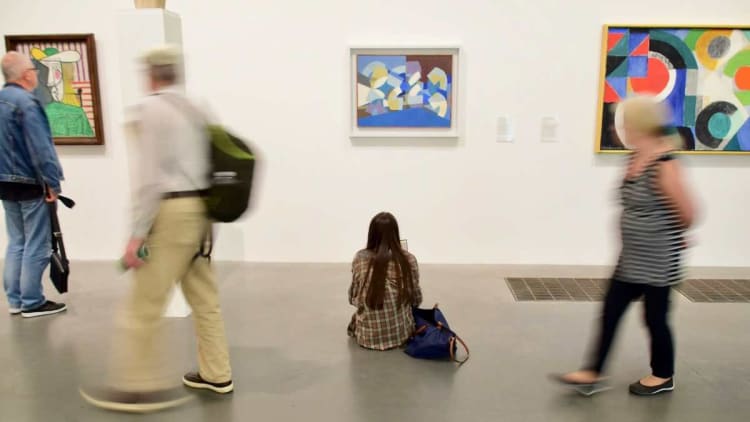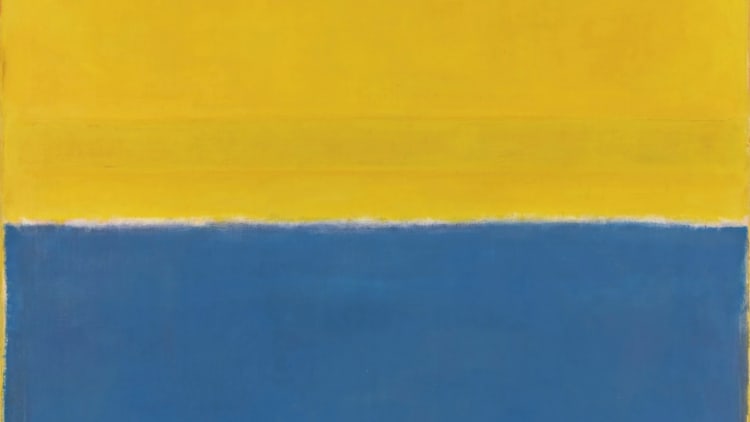Every year, collectors and art professionals eagerly anticipate Art Shortlist’s report on major trends in the art market.
In 2025, amid a complex economic and geopolitical landscape, the sector continues to evolve. Driven by digital tools and strategic repositioning, the art market is preparing to tackle numerous challenges.
This report presents our predictions for the coming year, identifying key developments and dynamics in this unique market. From innovations and new players to global challenges, here are the major trends to watch in the art market in 2025.

1 - Digitalization: a driving force in the market
Unsurprisingly, digitalization is expected to remain at the heart of the art market’s transformation in 2025. Online sales should continue to grow, attracting an increasingly diverse audience, particularly young collectors and agile, globally connected buyers.
Digital platforms, whether developed by established players or new entrants, provide unprecedented accessibility to art. These developments could make the market more fluid and open to a global audience, redefining outdated traditional practices.
Read also: Why young collectors are turning to online art?
2 - The rise of private sales
After a 20-30% slowdown in the art market in 2024, private sales could become a key growth driver in 2025. Valued for their discretion and flexibility, they allow transactions tailored to the specific needs of both buyers and sellers.
Major auction houses like Christie’s and Sotheby’s have made private sales a short- and medium-term priority, seeing them as a way to retain high-end clientele while reducing significant costs associated with public auctions.
To learn more about this trend and its impact, read our article The secrets of private sales.
3 - A return to established values: buyers exercise caution
In an uncertain economic climate, collectors are likely to favor works by artists with decades-long reputations, seen as safe and reassuring investments.
Modern and historical masters—such as Claude Monet, Paul Cézanne, David Hockney, Andy Warhol and Pablo Picasso—are expected to continue dominating public sales, widening the gap between them and newer entrants or outsiders in the market.
This quest for investment security could hinder the growth of emerging artists’ valuations. Galleries supporting these artists already experienced an unprecedented slowdown in sales in 2024.
This shift toward established names reflects a widespread sense of caution among buyers, motivated by a desire for stability in the face of a particularly volatile global economy.
Read also: 7 contemporary artists to collect before it’s too late
4 - Globalization under pressure: a more fragmented market
In 2025, the art market finds itself in a paradox: more connected than ever yet increasingly fragmented.
While new technologies facilitate international transactions, geopolitical tensions and emerging trade barriers—particularly between Europe, the U.S. and Asia—are prompting buyers to focus on shorter supply chains.
Countries such as Saudi Arabia, India and China are emerging or strengthening as key regional hubs, attracting local collectors and investors.
This market fragmentation stems from new regulations and an uncertain global economic climate that encourages commercial retrenchment.
Conclusion: a pivotal year for the art market
In 2025, the art market stands at a strategic crossroads. While geopolitical tensions and economic challenges reinforce certain local dynamics, technological innovations continue to redefine the sector’s traditional boundaries.
The rise of digitalization, private sales, and new regional hubs highlights the adaptability and resilience of an ever-evolving market. However, this evolution comes with increasing fragmentation, where the pursuit of security and stability amid uncertainty is leading some players to focus on established values.
The 2025 art market will no longer be a homogeneous entity. Increasingly shaped by local actors, it will be influenced by economic and cultural realities specific to each region.
This paradox could create new opportunities for innovation while underscoring the challenges of maintaining global market cohesion. It remains to be seen how these dynamics will stabilize and shape the way artworks circulate, are collected and are perceived on a global scale.




